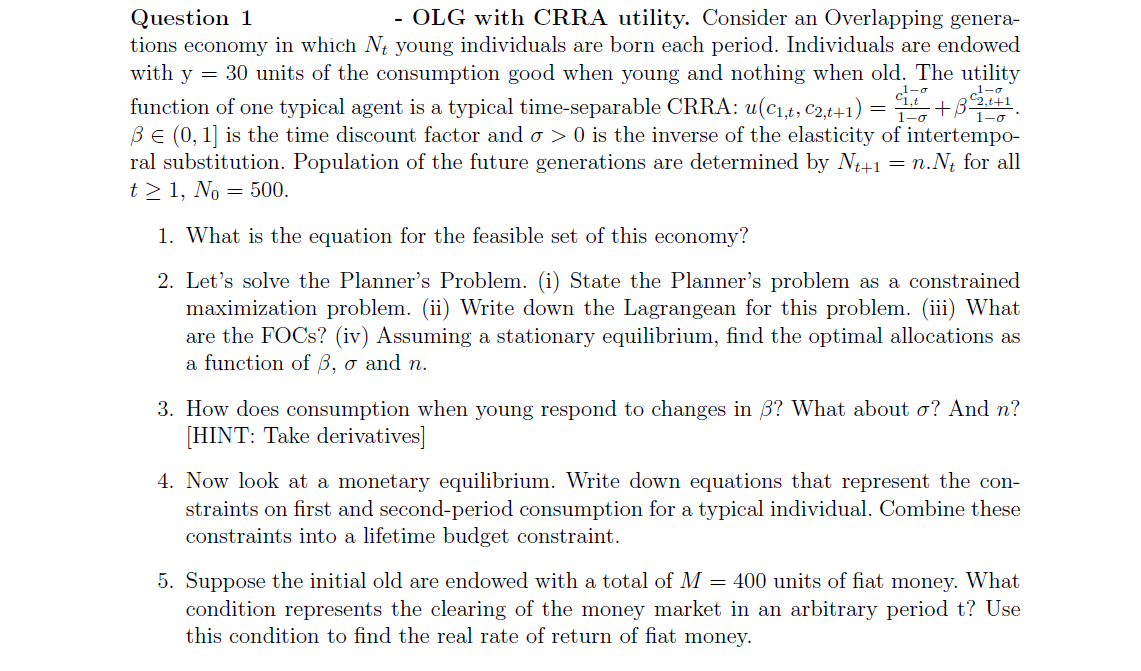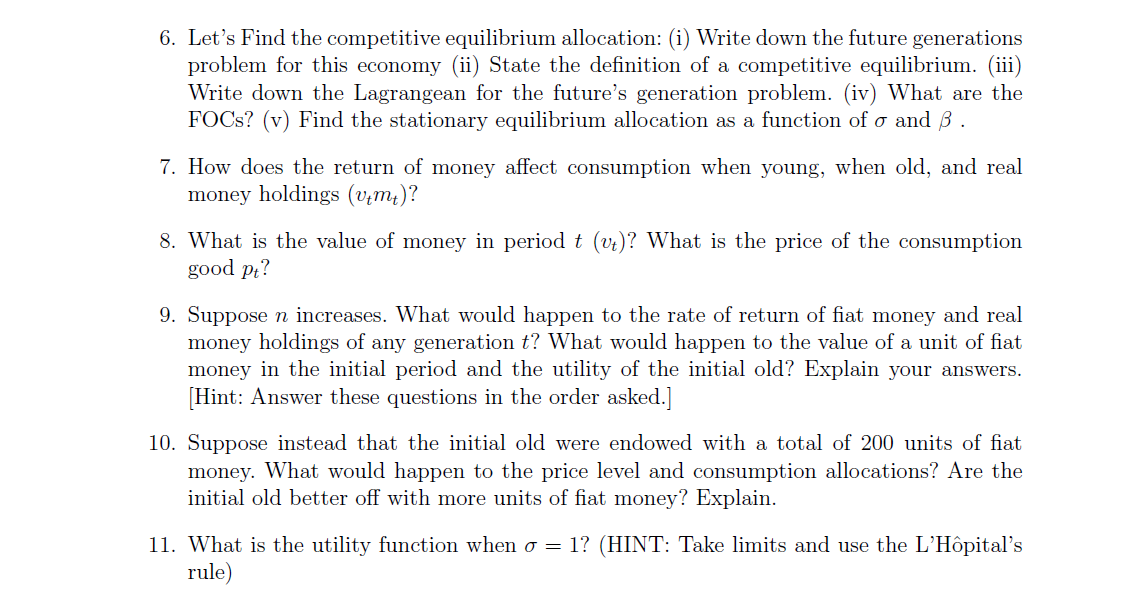

ECON 4721, Money & Banking
Reference: Modeling Monetary Economics (2016, Fourth Edition, Cambridge University Press) by Bruce Champ, Scott Freeman and Joseph Haslag.
Question 1 - OLG with CRRA utility. Consider an Overlapping genera tions economy in which N3 young individuals are born each period. Individuals are endowed with y = 30 units of the consumption good when young and nothing when old. The utility 1 10' function of one typical agent is a typical timeseparable CRRA: 1.50:1,\" 02,141) = 61': + 1362"\". 10 10 5 E [01 1] is the time discount factor and U > O is the inverse of the elasticity of intertempo ral substitution. Population of the future generations are determined by Ns+1 = mNt for all t 2 1, N0 = 500. 1. What is the equation for the feasible set of this economy? 2. Let's solve the Planner's Problem. (i) State the Planner's problem as a constrained maximization problem. (ii) Write down the Lagrangean for this problem. (iii) What are the FOCs? (iv) Assuming a stationary equilibrium, nd the optimal allocations as a function of 5, a and n. 3. How does consumption when young respond to changes in [3? What about 0? And in? [HINT: Take derivatives] 4. Now look at a monetary equilibrium. Write down equations that represent the con straints on rst and secondperiod consumption for a typical individual. Combine these constraints into a lifetime budget constraint. 5. Suppose the initial old are endowed with a total of M = 400 units of at money. What condition represents the clearing of the money market in an arbitrary period t? Use this condition to nd the real rate of return of at money. 10. 11. Let's Find the competitive equilibrium allocation: (i) Write down the future generations problem for this economy (ii) State the denition of a competitive equilibrium. (iii) Write down the Lagrangean for the future's generation problem. (iv) What are the FOCs? (v) Find the stationary equilibrium allocation as a function of a and f3 . How does the return of money affect consumption when young1 when old1 and real money holdings (stint)? What is the value of money in period t (0:)? What is the price of the consumption good pt? Suppose \":1 increases. What would happen to the rate of return of at money and real money holdings of any generation t? What would happen to the value of a unit of at money in the initial period and the utility of the initial old? Explain your answers. [Hint: Answer these questions in the order asked] Suppose instead that the initial old were endowed with a total of 200 units of at money. What would happen to the price level and consumption allocations? Are the initial old better olf with more units of at money? Explain. What is the utility function when a = 1? (HINT: Take limits and use the L'Hopital's rule)










